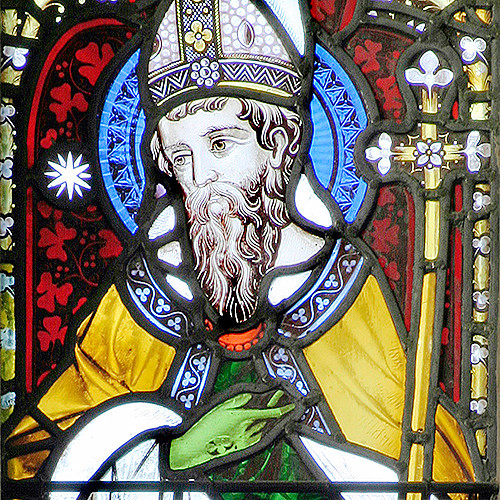
Material source taken from Catholicireland.net
St. Lawrence was Archbishop of Dublin during the incursion of Ireland by King Henry II. The Irish saint is highly honoured in Normandy, France, where he died in exile…
Laurence O’Toole was born in 1128 at Castle-Dermot, Co. Kildare. His father Maurice O’Toole, was King of Hy Murray. He lent his ten-year-old son and princes, as a token of security to the King of Leinster, Dermot McMurrough. This Leinster king treated poor Lawrence badly. He put the young prince in chains in a place of isolation, with cold comforts. Prince Lawrence found himself an oppressed pauper which lasted two years. The young hostage prince was eventually released after two years by the cruel Leinster King. Soon enough though, the same cruel Dermot McMurrough, gave King Henry II a foothold on Ireland.
For now, Lawrence found himself safe in waiting at St. Kevin’s monastery of Glendalough, with a view to be collected by his father and King Maurice. While still waiting at Glendalough, the young prince soon fell in love with the monastic life and developed a life of prayer. His two-year previous experience as a hostage, helped him to see that wealth and power were not the end all and be all. Lawrence felt a closeness to the benevolent God at Glendalough. So, he requested his father’s permission to remain there, to become a monk, and King Maurice O’Toole consented. Lawrence progressed well in religious life and by the age of twenty-five, he became the Abbot of Glendalough. As superior, he encouraged the monks in deeper learning. Charity for the poor was to be their breastplate. During a local famine for example, Laurence sold some treasures to provide relief for the hungry.
Appointment as Archbishop of Dublin.
Soon after the synod of Kells of 1152, Laurence was appointed in 1162 as the Archbishop of Dublin. One of his first task was to encourage the laity in the practice of the faith, and to become true disciples of Jesus. He brought in monks to Dublin from France, and they lived in the Holy Trinity Church, which was later renamed Christchurch Cathedral after it fell into protestant hands. This missionary effort by the most rev. Lawrence, helped many people to come back to the Sacraments. He continued in his care for the poor, as well as homeless children. He took them into his house, and they shared meals at his table. The most rev. Lawrence was a man of prayer, and when he got an opportunity, he loved to go to Glendalough and retreat at a lakeside hermitage which could be reached only by boat.
The Archbishop of Dublin, participated at the Third Lateran Council in Rome in 1179, with some other Irish bishops. The Pope, Alexander III, was aware that Ireland had been undergoing political upheaval with destabilizing effects. He was aware that the quality of the practice of the Catholic faith had deteriorated. The pope therefore gave Laurence the task of reforming and improving the Church in Ireland.
Suing for peace
The Normans landed in Ireland in 1169, thanks in no small part to the cruel King Dermot McMurrough. By 1170, King Henry II’s under lord, Strongbow besieged Dublin. Laurence became a peace envy, and he met Strongbow looking to establish a settlement. During the peace talks however, the Normans continued their besiege of the city. There was looting and killing of citizens. Thanks to Laurence’s efforts the lives of many were saved.
The Archbishop of Canterbury Thomas Becket was already murdered under the reign of Henry II in 1170. As archbishop, St. Lawrence would visit England in his endeavour to promote peace. In 1175 he became one of the signatories of the Treaty of Windsor, between England’s King Henry II and Ireland’s High King, Roderic O’Connor. But a few years after Windsor, another dispute erupted between the Henry II and the Irish Kings. In the spring of 1180, Laurence took the mantle of peace envoy again, returning to England. King, Henry II, had by now little time for bishops. Henry II wanted rid of the Irish archbishop and ordered him in exile to Britany, France.
Death in exile of an Irish archbishop
In the same year, Laurence became gravely ill and on 14th November 1180, at the age of 52, he died at Eu in Normandy at a monastery there. Laurence was later formerly canonized a saint in 1225. He is remembered in the liturgical calendar in Ireland on the 14th November.